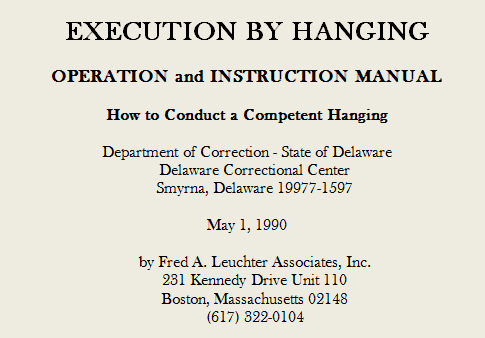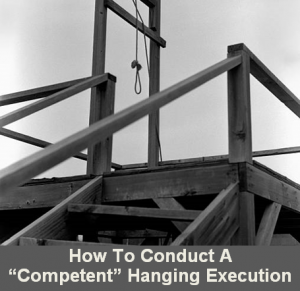 Capital punishment. You’re likely all-in or all-out on the issue. Few seem to sit on the fence about lawfully executing the worst of offenders. According to the Death Penalty Information Center, 61 percent of Americans currently oppose capital punishment, 33 percent support it and 6 percent fence sit with no strong opinion. But, the pendulum is swinging back towards execution approval in what the United States Supreme Court calls, “Evolving Standards of Decency”. This means public sentiment is moving from an anti cruel-and-unusual punishment mode to old-fashioned, eye-for-an-eye justice.
Capital punishment. You’re likely all-in or all-out on the issue. Few seem to sit on the fence about lawfully executing the worst of offenders. According to the Death Penalty Information Center, 61 percent of Americans currently oppose capital punishment, 33 percent support it and 6 percent fence sit with no strong opinion. But, the pendulum is swinging back towards execution approval in what the United States Supreme Court calls, “Evolving Standards of Decency”. This means public sentiment is moving from an anti cruel-and-unusual punishment mode to old-fashioned, eye-for-an-eye justice.
Believe it or not, I’m a cautious fence sitter when it comes to putting bad guys down. My view is the only definite outcome of killing a serious offender is ensuring they’ll never threaten society again. All the rest of the pro and con arguments seem secondary. Those include fear of executing the innocent, reducing crime and economizing expenses, moral repugnance, administering due punishment, issuing general deterrence and circumventing blotched procedures.
 Here are more American stats from the Death Penalty Information Center (DPIC). The DPIC Fact Sheet shows at the end of 2019, there were 2656 condemned souls waiting it out on America’s death rows. The two biggest states by population, California and Texas, had 729 and 224 condemned inmates respectively.
Here are more American stats from the Death Penalty Information Center (DPIC). The DPIC Fact Sheet shows at the end of 2019, there were 2656 condemned souls waiting it out on America’s death rows. The two biggest states by population, California and Texas, had 729 and 224 condemned inmates respectively.
Texas is a prolific executioner with 567 prisoners lethally injected since 1977 while California did-in 13. In total, the participating U.S. states killed 1512 inmates with Texas accounting for 37.5 percent of all executions. You can do the math on California’s commitment to the program, and they recently entered a moratorium on capital punishment.
The vast majority of the “civilized” world doesn’t have statutory death penalty legislation. American executions are left to each state’s discretion with the exception of federal offenses. 29 states approve capital punishment, although many refuse to practice it. 21 states have no stomach for the job regardless if it’s lethal injecting, electrocuting, gassing, shooting or hanging. Up till recently, hanging was still approved in Washington and New Hampshire but both states have recently repealed the death penalty.
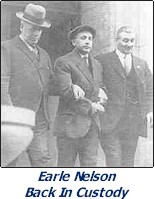 You’re probably wondering what got me going on capital punishment and why the headline How to Conduct a Competent Hanging. Well, I ran across the 1928 story of a prolific American serial killer named Earle Leonard Nelson – a guy I never heard of – who was hung in my growing-up town of Winnipeg, Manitoba, Canada. The article clicked me through to an official hanging instruction manual issued by the State of Delaware written when they still strung-up sentenced sociopaths.
You’re probably wondering what got me going on capital punishment and why the headline How to Conduct a Competent Hanging. Well, I ran across the 1928 story of a prolific American serial killer named Earle Leonard Nelson – a guy I never heard of – who was hung in my growing-up town of Winnipeg, Manitoba, Canada. The article clicked me through to an official hanging instruction manual issued by the State of Delaware written when they still strung-up sentenced sociopaths.
The publication’s title is Execution by Hanging – Operation and Instruction Manual and the sub-title is How to Conduct a Competent Hanging. I was intrigued by the complicated and precise science involved in hangings so I thought I’d share it with you. Here’s how Delaware Corrections competently hung people before they banned capital punishment in 2016.

EXECUTION BY HANGING – OPERATION and INSTRUCTION MANUAL
How to Conduct a Competent Hanging
BACKGROUND
Hanging has been utilized as a mode of execution for as long as man can remember. There have been more executions by this method than any other means. The procedure is simple; and yet there have been more botched executions by this method than by any other.
Essentially, execution by hanging is strangulation, effected by restricting the executee’s air supply at the neck, unconsciousness occurring between two and four minutes and
death within ten, resulting in death by asphyxiation. This, however, is not humane.
The correct procedure is when the executee is dropped some distance and stopped by a rope fastened around his neck. The force of this drop and stop breaks the bones in the executee’s neck and severs his spinal cord causing him to go into medical shock and be rendered unconscious. At this point the executee strangles to death. This method is the only humane form of hanging.
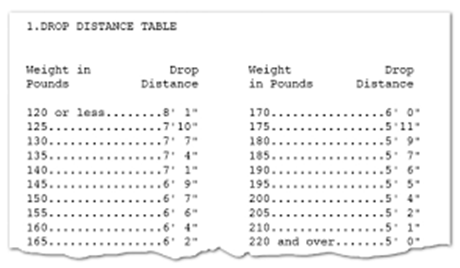 The force (in foot pounds) of the drop is critical and is determined by the physical stature of the executee, primarily his weight. In general, the heavier the person, the shorter the drop, and conversely, the lighter the person the longer the drop. Generally, weights as low as 120 pounds result in a force of some 950 foot pounds where weights over 220 result in some 1100 foot pounds. A drop of too short a distance will result in a condition where the spinal cord is not severed and the executee will not go into shock and will be conscious during the strangulation period. A drop of too long a distance will result in decapitation. Both conditions are not humane. In general, execution requirements will never result in an execution where the inertia of the drop will greatly exceed 1600 foot pounds or be less than 900 foot pounds. In all cases, it is better to utilize an established formula.
The force (in foot pounds) of the drop is critical and is determined by the physical stature of the executee, primarily his weight. In general, the heavier the person, the shorter the drop, and conversely, the lighter the person the longer the drop. Generally, weights as low as 120 pounds result in a force of some 950 foot pounds where weights over 220 result in some 1100 foot pounds. A drop of too short a distance will result in a condition where the spinal cord is not severed and the executee will not go into shock and will be conscious during the strangulation period. A drop of too long a distance will result in decapitation. Both conditions are not humane. In general, execution requirements will never result in an execution where the inertia of the drop will greatly exceed 1600 foot pounds or be less than 900 foot pounds. In all cases, it is better to utilize an established formula.
Drop Distance Table to Prevent an Error or Accident.
The Drop Distance Table contained herein is the established Table utilized successfully by the United States Army for many years. Additionally, the specifications for some of the specialized hardware defined herein are resultant from many years of testing by the United States Army.
MEDICAL DESCRIPTION
The executee will be dropped a distance as defined in the Drop Distance Table and his acceleration will be stopped by the rope around his neck. This will result in the breakage
of several neck bones and the severing of the spinal cord within a time period of less than a second. The executee will immediately enter medical shock. He will probably experience one brief instant (measured in milliseconds) of pain before he loses all consciousness and all sensation. His body will go limp with paralysis. He will then strangle due to the lack of oxygen. He should be brain dead in something more than six minutes and heart dead in about eight. The attending medical doctor will determine heart death.
![]()
Depending upon the equipment used, there will be some physical trauma to the executee’s body. This should be minimized by using the defined equipment.
PURPOSE
This Manual, the Protocol, Procedures and Equipment contained herein were written and designed to ensure a competent and humane execution. The equipment and procedures have been taken from long-standing and well-tested protocol and changes and improvements were made based upon expert engineering and medical considerations. It is the author’s intent to make the execution as easy and painless as possible for both the Executee and those persons tasked with carrying out the execution. The Protocol, Procedures and the Equipment have been designed to maintain the dignity of the executee, as well as, the dignity of those responsible for the execution.
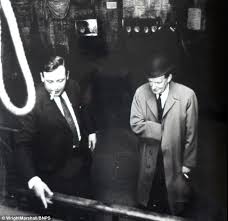 Up until very recently Execution was an Art employed only by the “Executioner”. It is only now becoming a Science with the Training and Certification of other types of Execution Technicians (i.e. Lethal Injection and Electrocution). Those persons carrying out the Protocol and Procedures in this Manual shall be Trained and Certified as Hanging Technicians.
Up until very recently Execution was an Art employed only by the “Executioner”. It is only now becoming a Science with the Training and Certification of other types of Execution Technicians (i.e. Lethal Injection and Electrocution). Those persons carrying out the Protocol and Procedures in this Manual shall be Trained and Certified as Hanging Technicians.
It is further suggested (if the Jurisdiction permits) that the Executee be tranquilized one-half (1/2) hour prior to execution by the administration of Diazepam (Valium) as per the dosage table.
EQUIPMENT
The following items are required for a competent hanging.
A Gallows should be utilized having the following basic characteristics.
A Floor Height of at least nine (9) feet to allow for a minimum clearance of about one (1) foot on the drop.
A Crossbeam Height of nine (9) feet giving an approximate clearance of three (3) feet above the executee.
An Opening and Trap Door of at least three (3) feet square to allow proper clearance for the executee.
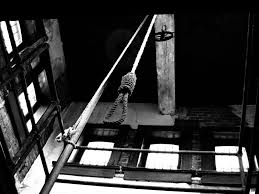 Means of Releasing the trap door. This is normally accomplished by utilizing two bolts
Means of Releasing the trap door. This is normally accomplished by utilizing two bolts
under one side of the door which are actuated by a common mechanism, either linkage rods or cable.
Means for Stopping the trap door swing after it has fallen. This is normally accomplished
utilizing a mechanical metal spring catch or a counterweight and a “rope grabber”.
An Eyelet or Fastening Mechanism for the rope containing the Hangman’s Noose.
Body Restraint. This is a waist strap containing two (2) wrist restraints. It is fabricated from 3000 lb. test nylon aircraft webbing two (2) inches wide and is fifty (50) inches long. It contains three (3) quick release fasteners (one [1] for the waist and one [1] for each wrist) all of which are adjustable from each side. The color is black with chrome fasteners.
Leg Restraint. This is an ankle strap which binds both ankles together. It is fabricated from 3000 lb. test nylon aircraft webbing two (2) inches wide and is thirty-six (36) inches long. It contains one (1) quick release fastener which is adjustable from both sides. The color is black with chrome fasteners.
Collapse Frame. This is a six by thirty (6 X 30) inch frame fabricated of square steel tubing. It contains three (3) body restraints measuring fifty (50) inches long by two (2) inches wide which are made from 3000 lb.test nylon aircraft webbing and contain three (3) quickrelease fasteners adjustable from both sides. (One [1]for each restraint.) The color of the frame and webbing is black and the fasteners are chrome. This is used in the event of a physical collapse by the executee and enables the personnel conducting the execution to transport him to the scaffold.
 Hood. The hood is fabricated of black denim and has split sides enabling it to extend onto the chest and back. It is generally used, optionally, to cover the face of the executee. A similar hood is available for the executioner but has a hole for the eyes.
Hood. The hood is fabricated of black denim and has split sides enabling it to extend onto the chest and back. It is generally used, optionally, to cover the face of the executee. A similar hood is available for the executioner but has a hole for the eyes.
Mechanical Hangman’s Knot. This is fabricated from a delrin cylinder and has two (2) longitudinal holes and a steel U-clamp to fasten the rope. It comes with a black denim cover which is fastened with velcro. It is a replacement for the Conventional Hangman’s Knot to eliminate the problems in tying the knot. It, unlike the Conventional Hangman’s Knot, never binds in operation.
Noose Sleeve. This is fabricated of denim and fastened with velcro. It is utilized to prevent tissue damage at the neck.
Rope. Standard hangman’s rope of three-quarter (3/4) inch Manila hemp is available in thirty (30) foot lengths. This rope has been boiled and stretched in drying to eliminate all spring, stiffness or tendency to coil. The rope is also available in six-hundred (600) foot coils but cannot be treated when supplied thus.
Knot Lubricant. Knot lubricant must be used whether utilizing the Mechanical or Conventional Hangman’s knot. With the Mechanical Hangman’s Knot, silicone spray is
recommended. With the Conventional Hangman’s Knot, melted paraffin is recommended.
PERSONNEL
Personnel for the Execution must consist of the following persons:
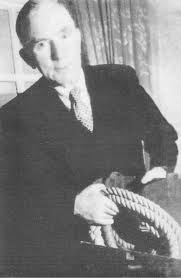 One (1) or more Certified Hanging Technicians
One (1) or more Certified Hanging Technicians
One (1) Executioner
Additional Personnel:
One (1) or more attendants or guards.
At least three (3) persons from the above categories are necessary to conduct the execution. Ideally, six (6) persons: two (2) Certified Hanging Technicians, three (3) attendants or guards, and one (1) Executioner would result in an easier execution. The Hanging Technicians, only, will do makeready, test and bind the Executee. The Executioner need not have any special training, as his only function is to release the trap door.
PREPARATION
The following procedure should be used in make-ready for the gallows prior to the execution. This should be done several days prior to the execution by a Certified Hanging Technician.
1. Determine the Rope Length for the particular executee. Employ the following formula for this determination and in the event of a multiple execution test with the requirements
for the lighter executee and the longer drop. After the first execution, the Rope Length should be shortened for the next execution. Since the test was for the lighter executee, the trap door may be considered to function with the greater weight of the second executee.
Rope Length = (S – C) + Drop Distance
Where: S = Scaffold Crossbeam Height from Scaffold Floor
C = Executee’s Chin Height
Drop Distance = the distance the executee is dropped
Rope Length = distance of the executee’s drop + the distance of his chin from the
scaffold crossbeam
Note: All measurements are in inches.
 2. Measure the Executee’s Chin Height from the floor and
2. Measure the Executee’s Chin Height from the floor and
weigh him.
3. Measure the Scaffold Crossbeam Height from the floor of
the scaffold.
4. Subtract the Chin Height from the Scaffold Crossbeam Height and add the Drop Distance from the Drop Distance Table to obtain the Rope Length.
5. Mark the Rope at the rope length and cut it seven (7) feet longer. If fastener for rope is not at crossbeam but at another location, add this distance to the crossbeam height plus any additional amount needed for fastening.
6. Boil the Rope for one (1) hour and stretch the rope while drying to eliminate all spring, stiffness or tendency to coil. Dry thoroughly.
7. Either Tie Conventional Hangman’s Knot as per included instructions or utilize a Mechanical Hangman’s Knot and fasten with U-clamp. Lubricate Hangman’s Knot with
proper lubricant.
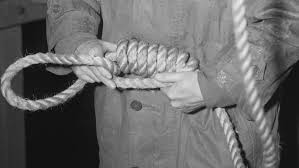 8. Install the Rope with the Hangman’s Noose to the scaffold crossbeam and cut off remaining rope. The rope should be stretched tight prior to cutting and only the Rope Length should hang below the scaffold crossbeam.
8. Install the Rope with the Hangman’s Noose to the scaffold crossbeam and cut off remaining rope. The rope should be stretched tight prior to cutting and only the Rope Length should hang below the scaffold crossbeam.
9. Oil, Check and Verify that all mechanical parts of the Gallows (i.e. the hinges on the trap door and the release mechanism) are functioning properly.
10. Fill Two (2) Sandbags with the equivalent weight of the executee (half in each bag) and fasten the bags together at the tops. Open the Noose and slip it over one of the bags and tighten it at the point where the bags are fastened together. You are now ready to test the gallows.
11, Close the Trap Door and Reset the trip mechanism. Stand on the door to make sure it is secure. Place the sandbags on the door and loop the rope in such a fashion as to prevent any crimping or catching. Test the gallows repeatedly (at least twelve [12] times) to insure proper mechanical operation of the trap door and that the rope is secure and will not break.
You are now prepared for the execution.
EXECUTION PROCEDURE
Note: The following procedure should be completed by a Certified Hanging Technician.
1. Install the Noose Sleeve and, if using a Mechanical Hangman’s Knot, install the cover for the Knot.
 2. Install the Body Restraint around the Executee’s waist and tightly bind his wrists to the restraint. (His arms may be restrained either in the front or the back.) If necessary, utilize the Collapse Frame.
2. Install the Body Restraint around the Executee’s waist and tightly bind his wrists to the restraint. (His arms may be restrained either in the front or the back.) If necessary, utilize the Collapse Frame.
3. Bring the Executee to the Execution Location and up the stairs to the scaffold. Remove the Collapse Frame, if utilized.
4. Place the Executee on the Trap Door and conduct the legal formalities.
5. Bind the Executee’s Legs with the Leg Restraint. Place the Hood over the Executee’s head, if used. Place the Hangman’s Noose over the Executee’s head and tighten snugly around his neck. Place the Hangman’s Knot directly behind the Executee’s left ear.
6. All Hanging Technicians shall leave the scaffold and the Executioner, on order from the Warden, shall release the trap door.
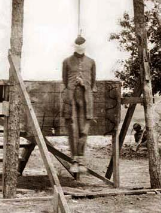 7. The Trap Door Shall Open and the Executee Shall Drop. On order from the Warden some eight minutes after the release mechanism was thrown, the attending doctor shall examine the Executee for heart death.
7. The Trap Door Shall Open and the Executee Shall Drop. On order from the Warden some eight minutes after the release mechanism was thrown, the attending doctor shall examine the Executee for heart death.
8. After the Pronouncement of Death, the Hanging Technicians shall, while supporting the Executee, loosen and remove the Noose and Hood and set the Executee on the floor. Thereupon, the Hanging Technicians shall remove the Leg and Body Restraints. Executee shall be placed in a body bag for removal.
The following Special Protocol applies:
APPENDIX
DROP DISTANCE TABLE
Weight in Drop Weight in Drop Pounds Distance Pounds Distance
120 or less……..8′ 1″ 170…………….6′ 0″
125…………….7’10” 175…………….5’11”
130…………….7′ 7″ 180…………….5′ 9″
135…………….7′ 4″ 185…………….5′ 7″
140…………….7′ 1″ 190…………….5′ 6″
145…………….6′ 9″ 195…………….5′ 5″
150…………….6′ 7″ 200…………….5′ 4″
155…………….6′ 6″ 205…………….5′ 2″
160…………….6′ 4″ 210…………….5′ 1″
165…………….6′ 2″ 220 and over…….5′ 0″
DIAZEPAM DOSAGE TABLE (Valium)
Note: To be used only in Jurisdictions where legal.

Diazepam Tablets USP, 10 mg (flat, round, white, scored tablets coded WC 143) supplied in bottles of 100 # N0047-0143-24. (Warner Chilcott)
Diazepam has a central nervous system depressant effect and has no short term side effects which would preclude its use as an execution anxiety and stress suppressant. Warning: will produce ataxia (appearance of being drunk) at high dosages and can cause death. Do not overdose or exceed the dosages in the table. If possible, administration should be by physician.
Weight Dosage in Pounds milligram
to 160 15 mg
to 180 20 mg
to 200 25 mg
to 220 and above 30 mg
PROCEDURE FOR TYING HANGMAN’S KNOT
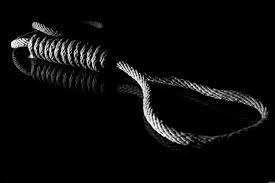 Length of loops: make loop as shown from Standing Part to Running End. A to B should be approximately eighteen (18) inches, and from C to Running End should be approximately thirty-five (35) inches. Wrap running end for six (6) turns. No extra rope should remain.
Length of loops: make loop as shown from Standing Part to Running End. A to B should be approximately eighteen (18) inches, and from C to Running End should be approximately thirty-five (35) inches. Wrap running end for six (6) turns. No extra rope should remain.
Tighten wrap (loops) by pulling Running End. Lock loops and form Knot by pulling down at point D and up on Running End. Slide Knot up or down on Standing Part to adjust size of Noose.
NOTE FROM AUTHOR
Hanging is an option in only three states. If properly done it is a humane procedure. The executee is dropped a proper distance as determined by his weight. This distance is
obtained from a drop distance table which is entered utilizing his weight as an argument. The drop and subsequent stop (an acceleration of something approaching some 1600 foot pounds) results in the breaking of several bones in the spinal column which causes nerve damage and unconsciousness. After one brief instant of pain, the executee goes into medical shock and strangles.
If the executee is dropped too short a distance, he will slowly strangle while conscious. If he is dropped to far a distance, this may result in decapitation. I recently wrote the Manual for the State of Delaware, Execution By Hanging, which has been approved by the court. This protocol will most likely be used in any future hanging in the United States. In the past, few hangings were properly conducted, and it is for this reason that the procedure is not generally considered to be humane.
* * *
 This hanging manual was the official Standard Operating Procedure (SOP) for Delaware State Corrections until they abolished all forms of capital punishment in 2016. A fellow by the name of Fred A. Leuchter wrote it and seems to have a good grip on operating a competent gallows. But, I thought I’d check him out and see what his expertise really is. Here’s what Wikepedia says about Fred Leuchter:
This hanging manual was the official Standard Operating Procedure (SOP) for Delaware State Corrections until they abolished all forms of capital punishment in 2016. A fellow by the name of Fred A. Leuchter wrote it and seems to have a good grip on operating a competent gallows. But, I thought I’d check him out and see what his expertise really is. Here’s what Wikepedia says about Fred Leuchter:
“Fred Arthur Leuchter Jr. (born February 7, 1943) is an American manufacturer of execution equipment and Holocaust denier who is best known as the author of the Leuchter report, a pseudoscientific document[2] that alleges there were no gas chambers at Auschwitz-Birkenau. Prior to this, he had been contracted by the authorities of several states in the U.S. to improve the design of instruments for capital punishment.
 Leuchter was charged in Massachusetts with having misrepresented himself to penitentiaries as an engineer, despite having no relevant qualifications; Leuchter plea bargained with state prosecutors, and received two years probation. He has also been accused of running a “death row shakedown”, in which Leuchter threatened to testify for the defense in capital cases if he was not given contracts for his services by that state.[1][3][4]
Leuchter was charged in Massachusetts with having misrepresented himself to penitentiaries as an engineer, despite having no relevant qualifications; Leuchter plea bargained with state prosecutors, and received two years probation. He has also been accused of running a “death row shakedown”, in which Leuchter threatened to testify for the defense in capital cases if he was not given contracts for his services by that state.[1][3][4]
Leuchter became internationally known for his testimony in defense of Holocaust denier Ernst Zündel in 1988. His study for Zündel’s trial has been referred to as the Leuchter Report[5] since it was published by Zündel with that title.
Leuchter’s work is often presented by Holocaust deniers as scientifically-based evidence for Holocaust denial, despite his research methods and findings having been widely discredited on both scientific and historical grounds. Leuchter, and his report, are the subject of Mr. Death: The Rise and Fall of Fred A. Leuchter, Jr., a 1999 feature-length documentary film by Errol Morris.”
![]()

